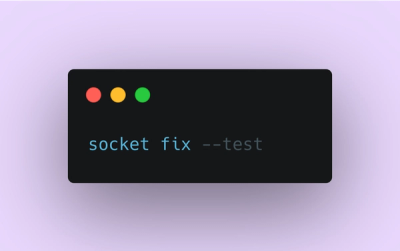
Product
Introducing Socket Fix for Safe, Automated Dependency Upgrades
Automatically fix and test dependency updates with socket fix—a new CLI tool that turns CVE alerts into safe, automated upgrades.
three-m2loader
Advanced tools


three-m2loader allows you to import M2 assets from World of Warcraft into your three.js app.
| druidcat2.m2 | 7ne_druid_worktable02.m2 | gilneas_fountain01.m2 |
|---|---|---|
 |  |  |
If you want to load an asset into your three.js app, you have to put all external resources like .blp or .skin files into the same directory like the M2 file. Depending on the M2 version, you have to name resources files with their FileDataID or with their actual file name.
A minimal code example looks like so:
import { M2Loader } from 'three-m2loader';
const loader = new M2Loader();
loader.load( 'models/cat/druidcat2.m2', function ( group ) {
scene.add( group );
} );
Animations in M2 are called sequences. The playback of sequences is managed with an instance of SequenceManager. You can access it in the userData field of the returned group.
const manager = group.userData.sequenceManager;
You can list all available sequences of a M2 asset with listSequences(). The list represents an array with objects that hold the id and name of a sequence.
const sequences = manager.listSequences();
If you want to play a sequence, you can use playSequence(). stopSequence() stops the playback.
manager.playSequence( sequence.id ); // start playback
manager.stopSequence( sequence.id ); // stop playback
If you want to stop the playback of all active sequences, you can use the convenience method stopAllSequences().
Certain sequences like Stand or AttackUnarmed have multiple variations. You can list them for a given sequence via listVariations().
const variations = manager.listVariations( sequence.id );
Keep in mind that all sequences have at least one variation (default). If you want to play or stop a sequence with a specific variation, use the second parameter of playSequence() and stopSequence().
manager.playSequence( sequence.id, variationIndex ); // start playback
manager.stopSequence( sequence.id, variationIndex ); // stop playback
Certain M2 assets have so-called global sequences. They represent animations that are active all the time like the flowing water of a fountain or the effects of elemental spirits.
You can check if a M2 asset has global sequences with hasGlobalSequences() and control the playback via playGlobalSequences() and stopGlobalSequences().
if ( manager.hasGlobalSequences() ) {
manager.playGlobalSequences();
}
Some models (especially creatures) require the definition of skin textures. This can be done with an instance of M2Options and the setSkin( id1, id2, id3 ) method. You have to pass in the FileDataIDs
of the textures that should represent the skin.
const options = new M2Options();
options.setSkin( 2015464, 123060 ); // 2015464 and 123060 are FileDataIDs representing BLP textures
const loader = new M2Loader();
loader.load( 'bearmount/bearmount.m2', function ( group ) {
scene.add( group );
}, undefined, undefined, options );
You can use the same approach to overwrite the default skin of creatures (e.g. to switch the body color).
To retain the parameter order of three.js loaders, the options parameter comes after the three callback functions onLoad(), onProgress() and onError().
This loader requires three.js in version r144 or higher.
FAQs
three.js loader for importing M2 assets from World of Warcraft.
The npm package three-m2loader receives a total of 8 weekly downloads. As such, three-m2loader popularity was classified as not popular.
We found that three-m2loader demonstrated a healthy version release cadence and project activity because the last version was released less than a year ago. It has 0 open source maintainers collaborating on the project.
Did you know?

Socket for GitHub automatically highlights issues in each pull request and monitors the health of all your open source dependencies. Discover the contents of your packages and block harmful activity before you install or update your dependencies.

Product
Automatically fix and test dependency updates with socket fix—a new CLI tool that turns CVE alerts into safe, automated upgrades.

Security News
CISA denies CVE funding issues amid backlash over a new CVE foundation formed by board members, raising concerns about transparency and program governance.

Product
We’re excited to announce a powerful new capability in Socket: historical data and enhanced analytics.